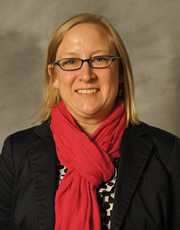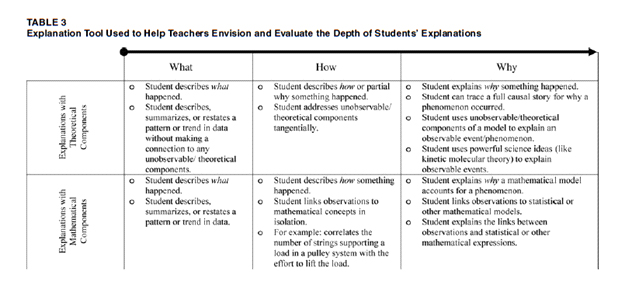Crafting Better Explanations in Science Classes
December 30, 2013

Melissa Braaten
Scientific explanations offer insights into how and why things work.
But too often science educators use the term “explanation” to refer to other discourse activities that are not necessarily explanatory—for example, elaborating or clarifying a response to a question.
To make science education reform a reality, teachers and faculty would benefit from a clearer vision of what scientific explanation truly is and does.
UW–Madison education professor Melissa Braaten points out that scientific explanation for natural phenomena often involves unseen entities. They include atoms and forces, underlying processes such as genetic drift or oxidation, statistical or probabilistic patterns, or broad scientific theories.
For example, a teacher asks students to explain why condensation appears on the outside of a cold glass of water. A description would emphasize observable features such as the cooler temperature of the water in the glass and the presence of droplets on the outside of the glass. In contrast, an explanation would emphasize unobservable processes such as molecular motion and energy. It would employ key scientific ideas and theories and would seek underlying causes.
Braaten says science education would benefit from conversations about three questions:
(1) what constitutes a “good” scientific explanation in a science classroom?
(2) what makes an explanation explanatory rather than descriptive? and,
(3) how might teachers evaluate the merits of students’ alternate explanations?
Scientific explanations seek to illuminate the workings of natural events in the world. However, when teachers press students to explicate the meaning of their terms, or to communicate their thinking about a problem or their procedures for arriving at solutions to problems, the object of the “explanation” is no longer natural phenomena.
A number of recent interventions have addressed teachers’ and students’ work with scientific explanations and argumentation. These interventions have made major strides toward supporting shifts in reform-oriented science teaching, but they tend to prioritize argumentation at the expense of scientific explanation. The reference to “how” or “why” is sometimes lost within the intervention as it shifts emphasis toward supporting students’ argument construction: Students may be prompted to provide pieces of evidence to substantiate their claims and to write statements illustrating their reasoning about evidence.
Simply exhorting teachers to engage in a practice, no matter how valuable, does not make the practice happen. Teachers need support for learning how to engage in ambitious science teaching practices. With colleagues, Braaten created a rubric they call the Explanation Tool (see illustration below). This tool delineates a simplified continuum of scientific explanations that
- employ major scientific theories,
- seek underlying theoretical causes for observable events in nature, and
- use mathematical models to describe patterns in data, when appropriate.

The Explanation Tool offers a powerful way to organize teachers’ thoughts about scientific explanations in their classrooms. It scaffolds teacher learning in three ways.
1. Propels teachers to examine the science content of their lessons. Some teachers working with Braaten began to critique their standard instructional materials and found the lessons seemed to lack key theoretical concepts, or tended to focus exclusively on measuring and describing easily observed variables.
2. Helps teachers refine the questions they pose to students during class and in written assignments. Some teachers used the tool to help sift through the myriad questions in their instructional materials and to select questions that emphasized explanatory reasoning instead of questions asking students to recall facts or define words.
3. Helps teachers examine their students’ lines of reasoning. Teachers used the tool to map out their learning goals in advance, and then to systematically analyze their students’ responses throughout a unit of instruction, tracing lines of thought and modifying subsequent instruction.
The tool has proven to offer at least four valuable functions for teachers. It embodies a valued practice (e.g., scientific explanation), applies across grade levels and subject matter subdomains, represents practice in accessible language, and describes levels of performance from which teachers and students can identify “where they are” and what constitutes the next levels of performance.
Braaten says that she, her colleagues, and science teachers have benefited from discussing scientific practice and knowledge construction. These conversations have challenged teachers’ and Braaten’s own thinking about scientific explanations.
With well-conceptualized systems of tools and with the constant support of a group of colleagues, novice science teachers can accomplish ambitious forms of science teaching that are otherwise generally unattainable by novices and even many expert teachers.


